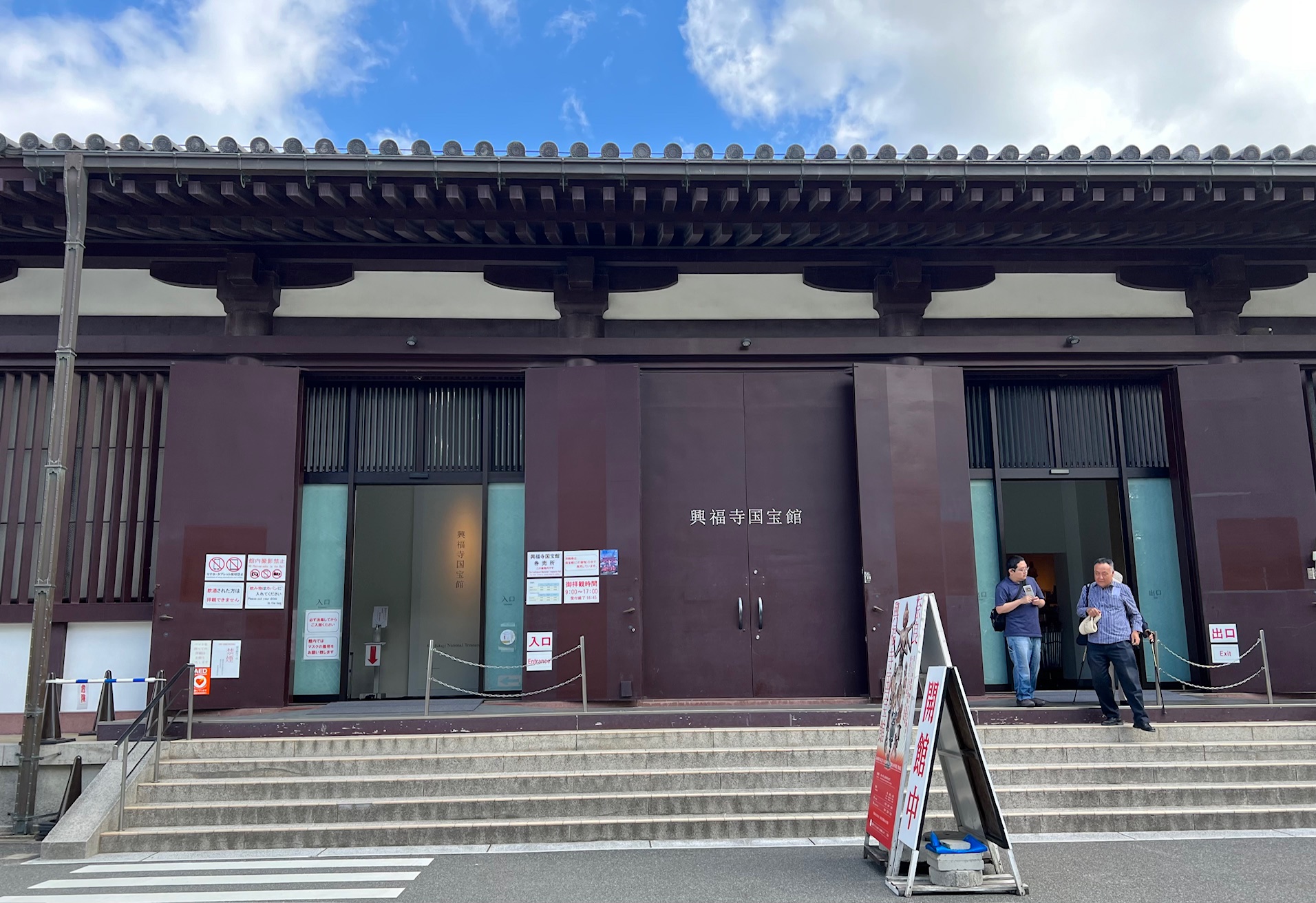Located just north of the Five-Story Pagoda and Tokondo (The Eastern Golden Hall) , the modest National Treasure Hall might not catch your eye at first. It’s one of the first buildings you’ll encounter when you enter the Kofukuji precincts from Kintetsu Nara Station, walking along the main street (Noborioji). This site once housed a dining hall (Jikido) where monks took their meals. The National Treasure Hall, opened in 1959, preserves the remains of the old dining hall in its basement. Inside this seemingly unassuming building is a treasure trove of the finest Buddhist statues from the Asuka period (7th century) to the Kamakura period (13th century), making it truly a “National Treasure Museum.”

When visiting Nara, it’s easy to get overwhelmed by the sheer number of places to see and the considerable distances between them. Choosing which sites to visit often involves tough decisions. Whenever I find myself near Kintetsu Nara Station with a bit of time to spare, I make a point to visit the Kofukuji National Treasure Hall. In the dim, quiet space, the serene presence of the Buddhist statues offers an overwhelming sense of peace. Stepping inside, your mind calms, and the beauty of the statues captivates you. These statues are not confined behind glass cases; they share the same air with us, inviting a natural gesture of prayer, much like the people of old must have done. This act of prayer connects you to the prayers of ancient times.
Exhibits
Choosing favorites among the statues is extremely difficult, but I’d like to briefly introduce a few of my most beloved pieces. The Western Golden Hall (Saikondo), which housed the Ten Great Disciples and the Eight Guardian Deities, was built in 734 by Empress Komyo to pray for the soul of her mother, Tachibana no Michiyo, who had passed away the previous year. While only the foundation stones of the Western Golden Hall remain, some of the elegant statues that once resided there have survived various disasters and are preserved to this day.
National Treasure Dry Lacquer Standing Statue of the Ten Great Disciples – 8th Century (Formerly housed in the Western Golden Hall)
国宝脱乾漆造 十大弟子立像 8世紀(元西金堂)
These statues are incredibly delicate and gentle, and standing before them, one’s heart feels cleansed. I often wonder about the sculptors who created these transparent and exquisite figures. Every time I visit, I find myself spending considerable time in front of them, particularly the statue of Subhuti (or Ananda). Originally, there were ten statues, but only six remain today.

National Treasure Dry Lacquer Standing Statue of the Eight Mythological Beings– 8th Century (Formerly housed in the Western Golden Hall)
国宝脱乾漆造 八部衆立像 8世紀(元西金堂)
The statue of Ashura from the Eight Mythological Beings is very famous, even having its own fan club, but I am particularly fond of the statue of Gobujyo, which remains only from the chest to the head. The right arm of this statue is currently owned by the Tokyo National Museum, and I hope to see it there someday. Among the Eight Mythological Beings, four have black faces and four have red faces – an intriguing detail. Additionally, four of the statues have clearly youthful faces, in contrast to the foreign-looking features of the other four, which is quite fascinating. One theory suggests that the statues with youthful faces reflect the short-lived crown prince, Motoi, son of Empress Komyo and Emperor Shomu, who died just before his first birthday.
National Treasure Wooden Relief Carvings of the Twelve Heavenly Generals – 11th Century (Formerly housed in the Eastern Golden Hall)
国宝 木造 板彫十二神将像 11世紀(元東金堂)

This is a rare set of relief statues of the Twelve Divine Generals, each with a humorous and friendly face and pose. These guardians bring a smile to those who look at them, exuding positive energy.
National Treasure Wooden Standing Statues of Jaki (little demons) with Lanterns – 13th Century (Formerly housed in the Western Golden Hall)
国宝 木造 天燈鬼立像・龍燈鬼立像 13世紀(元西金堂)
These Jakis (little demons), usually depicted being trampled by the Four Heavenly Kings, are shown standing! Both Ryutoki and Tentoki are incredibly humorous and endearing. The contrasting red and blue, static and dynamic poses make these statues truly engaging. Their lively expressions are charming, and the Ryutoki (Dragon Lantern Demon) was created by Koben, the son of the famous sculptor Unkei.

